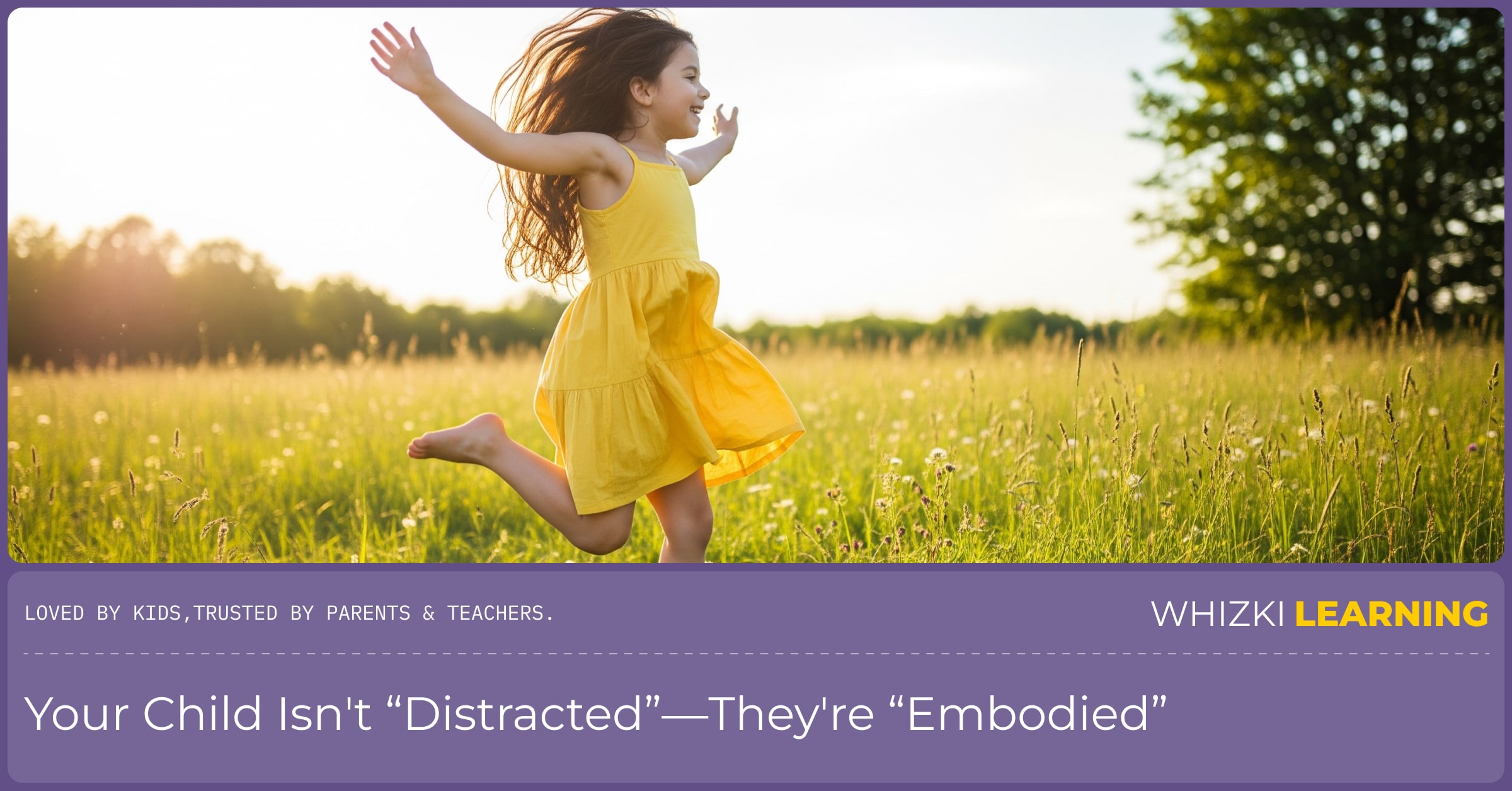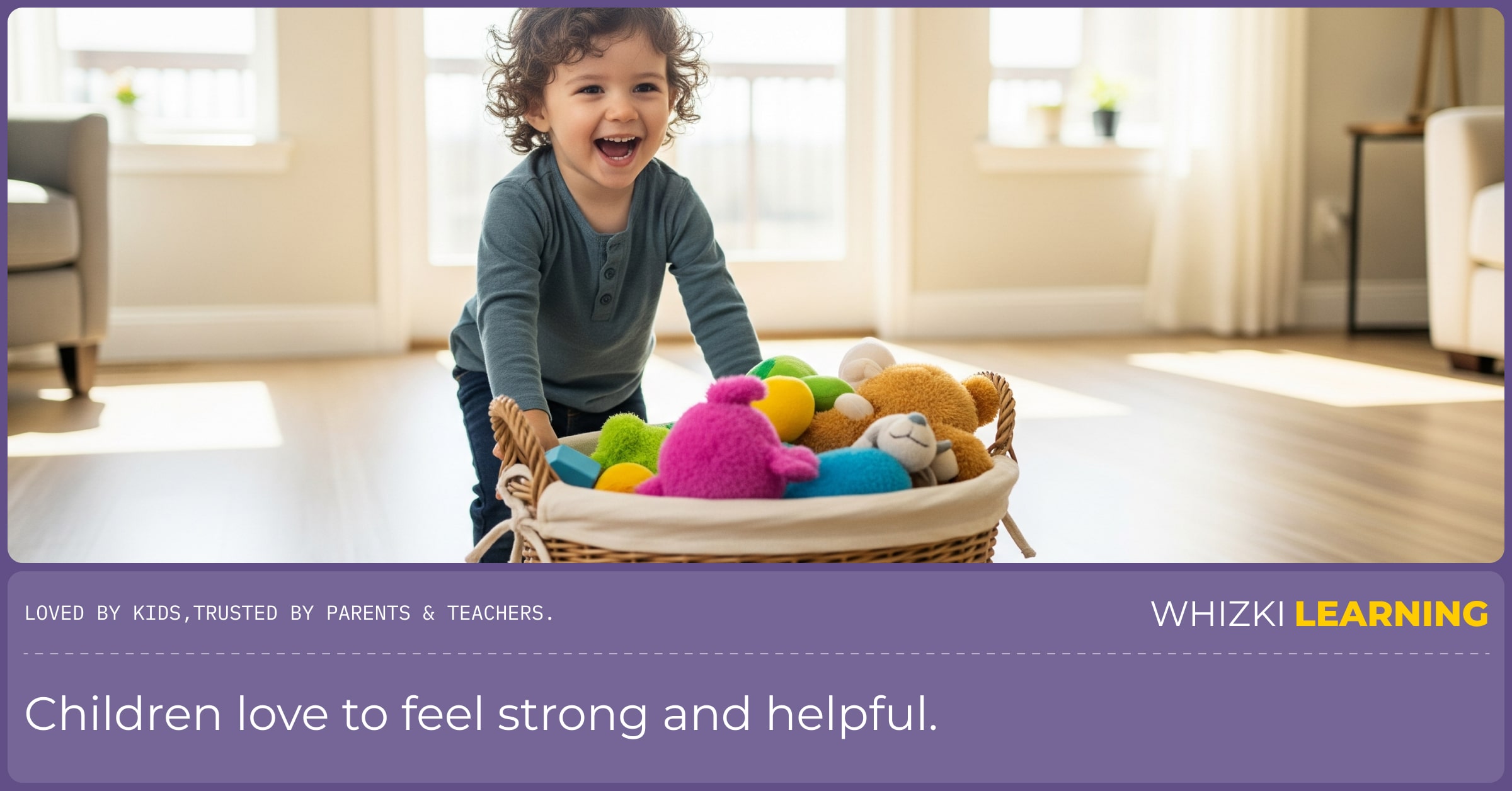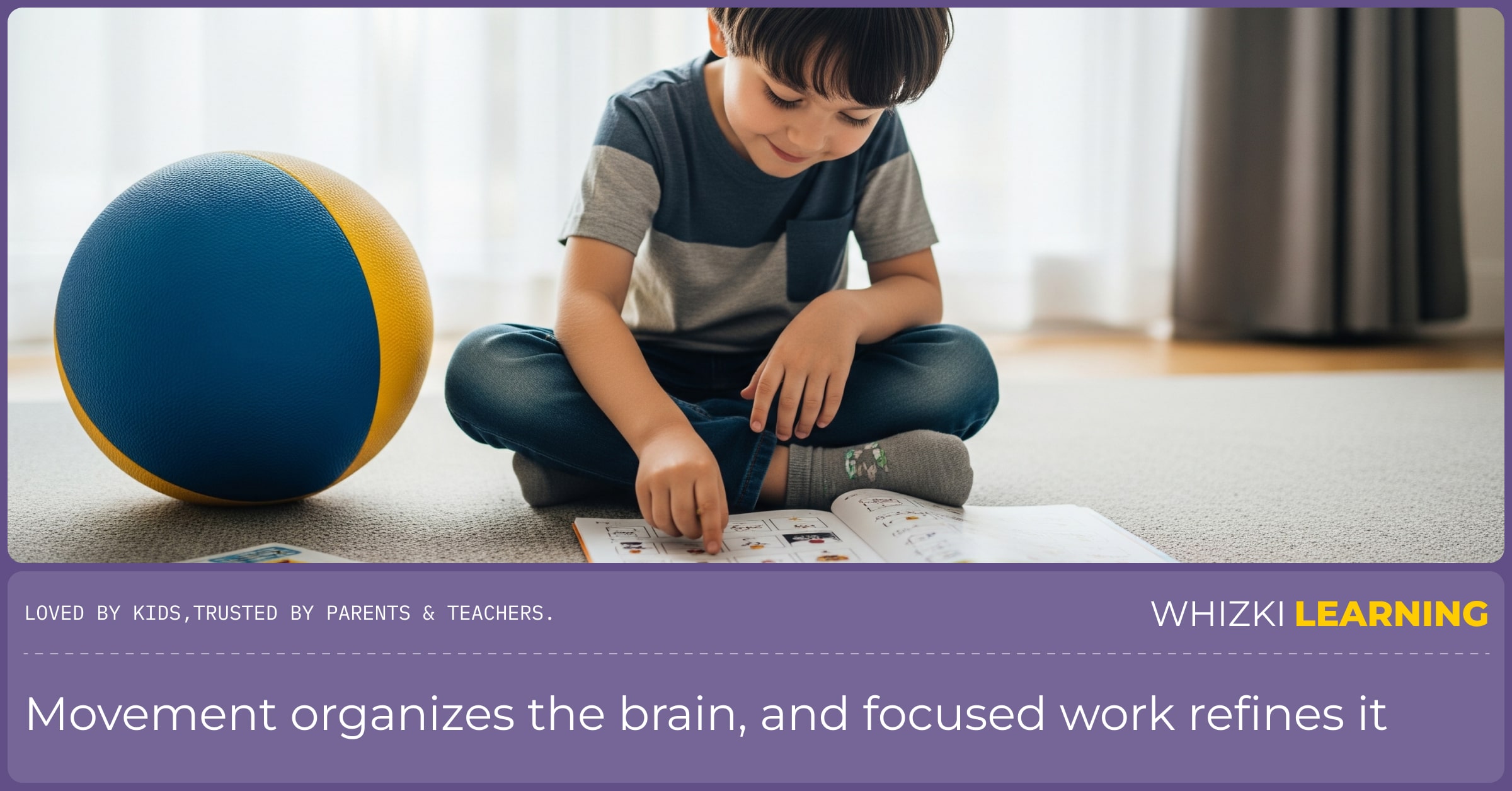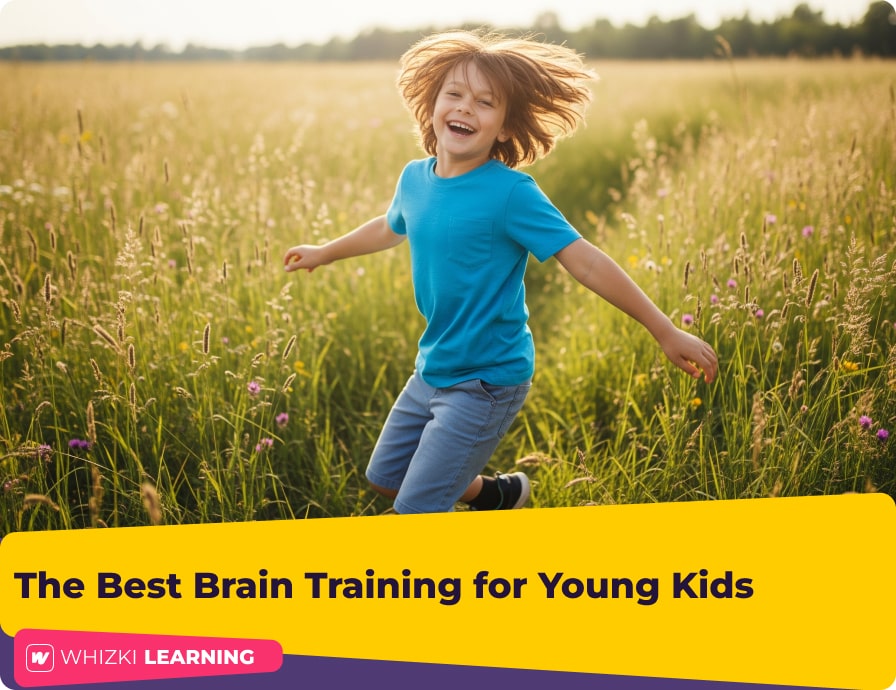It’s a scene that plays out in homes everywhere. You’ve set up a lovely activity-a puzzle, a drawing, or a page in a new workbook. Your child sits down, and thirty seconds later, the wiggles start. The chair tips back. They’re tapping their feet. They’re humming. And the classic parental phrase comes out, often with a sigh: 'Can you please just sit still and focus?'
We see stillness as a requirement for learning. But what if we've had it backwards? What if all that fidgeting, wiggling, and moving isn't a distraction from the learning, but a vital clue about what your child's brain needs to be able to learn?
Welcome to the beautiful, bustling world of 'embodied cognition'-the simple idea that kids don’t just think with their brains; they think with their entire bodies. This guide is about celebrating the wiggle. We're going to explore the incredible science of how movement organizes the brain and give you a toolkit of joyful, 'brain-building' movements you can do in any space. You’ll soon see that the best path to a focused mind often starts with a running leap.
Your Child Isn't 'Distracted'-They're 'Embodied'
A young child's brain is a construction site, and movement is the crew doing the heavy lifting. Two of the most important, yet least-known, sensory systems are working overtime during play. Understanding them is like getting a secret decoder ring for your child's behavior.
The body is the mind's first teacher. When we allow children to move, we are not taking a break from learning; we are engaging in the most fundamental form of learning there is.- Dr. Anya Sharma, Pediatric Occupational Therapist
- The Vestibular System (The Brain's 'GPS'):
- Located in the inner ear, this system controls balance, spatial awareness, and coordination. When a child spins, swings, or hangs upside down, they are sending a massive 'wake up!' signal to their brain. This input is incredibly organizing and helps the brain feel centered and ready to focus.
- Proprioception (The Body's 'Map'):
- This is the sense of knowing where your body is in space, provided by feedback from your muscles and joints. Activities like pushing, pulling, jumping, and crashing-what therapists call 'heavy work'-send deeply calming and organizing signals to the brain. It's why a tight hug can feel so good when a child is overwhelmed.
When a child is fidgeting, they are often unconsciously trying to give their brain the vestibular or proprioceptive input it craves to feel organized enough to focus. Our job isn't to stop the fidgeting, but to provide healthy, effective ways for them to get that input.

The 'How-To': 5 Brain-Building Movement 'Snacks' for Any Space
Think of these not as long workouts, but as short, 5-minute 'movement snacks' you can sprinkle throughout the day to reset and refuel the brain. Whether you're in a big backyard or a small apartment, these activities work.
1. The 'Animal Kingdom' Workout
This is a classic for a reason. Animal walks are a full-body workout that provides tons of calming 'heavy work' input.
- Try this: Challenge your child to get across the living room as a bear (walking on hands and feet), a frog (deep squat jumps), or a crab (scuttling backward on hands and feet).
- Brain Benefit: Builds incredible core strength (essential for sitting still at a desk), upper body strength (for handwriting), and body awareness.
2. The 'Heavy Lifter' Helper
Children love to feel strong and helpful. 'Heavy work' is one of the quickest ways to calm a disorganized or over-excited nervous system.
- Try this: Make it a game! 'Can you be my super-strong helper and push the laundry basket to your room?' Other ideas: stacking pillows into a tall tower, carrying a few books from one room to another, or helping you push a small piece of furniture.
- Brain Benefit: This powerful proprioceptive input is deeply regulating and helps children feel grounded in their bodies. As we learned in our guide to handwriting, this physical strength is a direct precursor to fine motor control.

3. The 'Crossing the Midline' Dance Party
The 'midline' is an imaginary line down the center of the body. When a child crosses it (e.g., their right hand touches their left knee), they are forcing the left and right hemispheres of their brain to communicate. This brain-building is vital for complex skills like reading.
- Try this: Put on some music and have a quick dance party! Call out moves like 'Touch your left knee with your right hand!' or 'Draw a big figure-eight in the air!' Simple songs like 'Head, Shoulders, Knees, and Toes' are perfect for this.
- Brain Benefit: You are literally building and strengthening the neural bridge (the corpus callosum) that allows the two sides of the brain to work together as a team.
4. The 'Balancing Beam' Adventure
Balance requires a huge amount of focus and body-brain communication.
- Try this: You don't need a real beam. The edge of a rug, a line of tape on the floor, or a curb outside can become a tightrope over a 'hot lava' river. Challenge them to walk it slowly, forwards, and then backwards.
- Brain Benefit: This directly stimulates the vestibular system, improving focus, balance, and core stability all at once.
5. The 'Spin & Reset'
This is the most powerful vestibular input. It's like pushing the 'reset' button on the brain's attention system.
- Try this: Supervised spinning in an office chair (5-10 spins one way, then the other). Rolling down a small grassy hill. Doing log rolls across the floor.
- Brain Benefit: This intense vestibular stimulation can quickly 'wake up' a sluggish, tired brain or calm an overactive one. It's an incredibly effective tool to use right before you need your child to focus on a quieter task.
The Perfect Pairing: Movement and Mindful Work
Here’s the secret: movement organizes the brain, and focused work refines it. They are not opposites; they are perfect partners. After a 10-minute 'movement snack,' a child’s body is calm, and their brain is alert and ready for input. This is the perfect moment to sit down together for a quiet, connecting activity.
This is where a Whizki workbook shines. After the 'big body' has had its fill, the brain is primed to tackle a maze, a logic puzzle, or a tracing and writing practice page. The physical readiness from play translates directly into better focus and concentration on the page. Our printed workbooks only philosophy ensures that this 'cool-down' period remains a tactile, screen-free experience that complements the physical play that came before it.

Honor the Wiggle
So next time you see your child fidgeting, take a moment. Instead of seeing a distraction, see a request. Their body is telling you what their brain needs. By honoring that need for movement, you are not taking away from their learning time. You are giving them the very tool they need to unlock their mind's full potential. Embrace the dance party, the animal walks, and the pillow forts. You're not just raising a child; you're building a brain.






